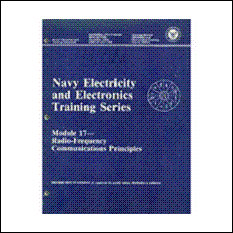Coax (rf) Connector Replacement
Coaxial cables carry low- or high-power radio signals for short distances inside equipment or for long distances up radio towers.
Larger diameter cables have less loss at higher frequencies. Cables can have braided, foil or solid metal shields or solid, braided or hollow center conductors. Some can be filled with inert gas to prevent moisture accumulation.
Hundreds of different types of connectors terminate coaxial cables, but there are certain steps common to all when attaching them. Some require elaborate tools and others, hardly any.
Select an appropriate connector for the cable and its application.
Some typical items you may need:
- A sharp razor or Knife
- Wire strippers
- Crimping tool
- Compression tool
- Various hand tools
Connector instruction sheet:
1. Use "F" type connectors for home entertainment systems.Place the connecting hardware over the cable as required. Some connector bodies have attaching nuts, washers or ferrules that you must first place over the cable before preparing it. Outdoor connectors have gaskets to keep out water or make airtight seals. Some need nothing at all.
2. Use "BNC" connectors for ham radio and professional applications. Pepare the cable by stripping off the outer jacket, trimming back the shield and stripping insulation off of the center conductor. Spread the shield strands out carefully with a pick or scribe. Use a knife to cut plastic or rubber insulation materials. Use scissors,tin snips or a hacksaw to trim the outer shield, depending on the cable size. See the instruction sheet for proper strip lengths and recommended tools.
3. Use larger connectors for industrial applications. Attach the center conductor pin. For "F" connectors, the center conductor becomes the center pin and inserts directly into the equipment. For one-piece, compression types, the conductor slips into a socket inside the connector. For crimp types, place the center conductor in the pin, place the pin in the appropriate jaws of the crimping tool and squeeze the handles until they stop. For a hollow center conductor, screw the self-tapping pin into the opening. In all cases, ensure the connection is centered, tight and flush with the insulator per the specific instruction sheet.
4. Insert the cable into the connector body. For crimp types, ensure the outer ferrule slips under the shield. For one-piece connectors, ensure the center pin enters the socket. For larger connectors, ensure all parts align according to the specific instruction sheets. For all connectors, ensure the inside of the connector has no wire strands, foil shreds or copper shavings from sawing or cutting that could cause a short circuit. For all outdoor connectors, ensure all gaskets seat properly, according to the instruction sheet.
5. Finalize the connection. For a compression connector, place the entire connector horizontally into the receptacle with the cable protruding out the front. For a crimp connector, place the outer ferrule over the shield and place it into the appropriate jaws. Squeeze the handles until they stop and remove the completed connector. For larger connectors, screw the outer collar into the connector body and tighten it with wrenches, as specified by the instruction sheet.
Tips & Warnings
Always trim the outer covering, shield and inner insulation so that they are even and square. Jagged or slanted edges can cause improperly fitting components.
Forgetting to slip the connector's nut or ferrule onto the cable before starting could cause you to redo cable preparation work. In cases where cable length is critical, this could result in severe problems.
Anything loose or improperly installed in a coaxial connector can cause noise problems in the signal that will be difficult to find. Assemble connectors carefully.
Ensure you do not break more than a few strands of the shield when combing out the braid. This can cause noise problems on the cable.
If you use a heat shrink boot or straight heat shrink, ensure it is UV resistant so that it will withstand environmental factors such as heat and light.
Featured below is a demonstration of proper techniques for attaching a coaxial (rf) connector onto a cable.
You are not limited to using the tools or materials presented in this video.
It is up to the individual or technician performing the repair or building the project to use good judgement and common sense in selecting the correct tools and materials for the job.
Follow the instructions presented above and with a little practice you will become an expert in no time at all.















